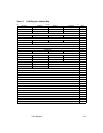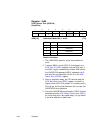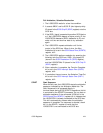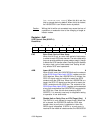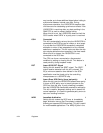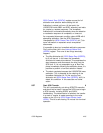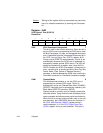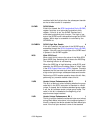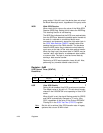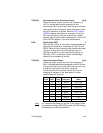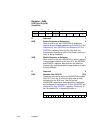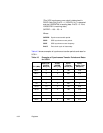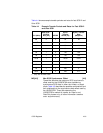SCSI Registers 4-27
combined with the first byte from the subsequent transfer
so that a wide transfer is completed.
SLPMD SLPAR Mode 5
If this bit is cleared, the SCSI Longitudinal Parity (SLPAR)
register functions as a byte-wide longitudinal parity
register. If this bit is set, the SLPAR functions as a
word-wide longitudinal parity function. The high or low
byte of the SLPAR word is accessible through the SLPAR
register. Which byte is accessible is controlled by the
SLPHBEN bit.
SLPHBEN SLPAR High Byte Enable 4
If this bit is cleared, the low byte of the SLPAR word is
accessible through the SCSI Longitudinal Parity (SLPAR)
register. If this bit is set, the high byte of the SLPAR word
is present in the SLPAR register.
WSS Wide SCSI Send 3
When read, this bit returns the value of the Wide SCSI
Send (WSS) flag. Asserting this bit clears the WSS flag.
This clearing function is self-clearing.
When the WSS flag is high following a wide SCSI send
operation, the SCSI core is holding a byte of “chain” data
in the SCSI Output Data Latch (SODL) register. This data
becomes the first low-order byte sent when married with
a high-order byte during a subsequent data send transfer.
Performing a SCSI receive operation clears this bit. Also,
performing any nonwide transfer clears this bit.
VUE0 Vendor Unique Enhancements, Bit 0 2
This bit is a read only value indicating whether the group
code field in the SCSI instruction is standard or vendor
unique. If cleared, the bit indicates standard group codes;
if set, the bit indicates vendor unique group codes. The
value in this bit is reloaded at the beginning of all
asynchronous target receives.
VUE1 Vendor Unique Enhancement, Bit 1 1
This bit is used to disable the automatic byte count reload
during Block Move instructions in the command phase. If
this bit is cleared, the device reloads the Block Move byte
count if the first byte received is one of the standard



